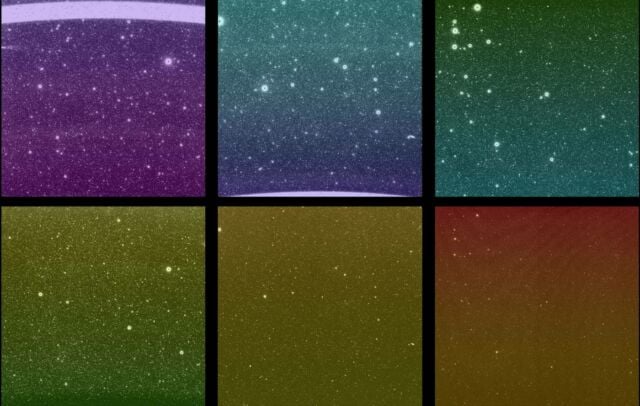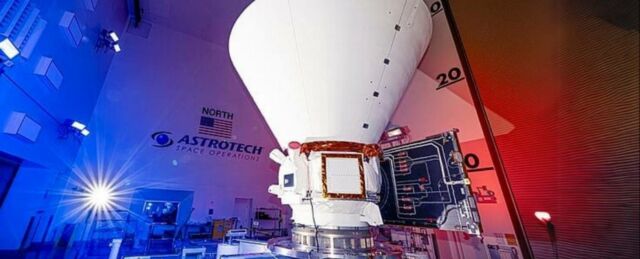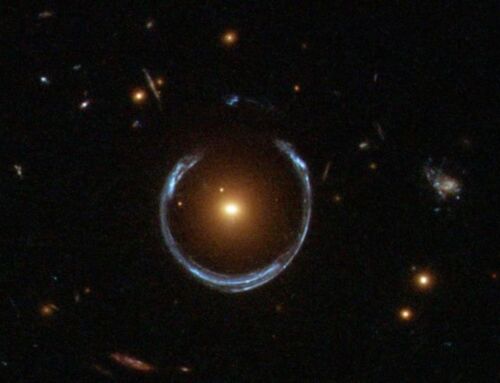 NASA’s SPHEREx Takes First Images. © NASA/JPL-Caltech
NASA’s SPHEREx Takes First Images. © NASA/JPL-Caltech
NASA’s SPHEREx telescope, which will scan the entire sky and map millions of galaxies, has taken one of its first images in space.
Each of its six detectors captured an image, with visible-light colors added to represent infrared light that the human eye can’t see.
These early images, shown in rainbow colors to highlight different infrared wavelengths, show that the observatory is working properly.
SPHEREx (Spectro-Photometer for the History of the Universe, Epoch of Reionization and Ices Explorer), which launched on March 11, has turned on its detectors in space for the first time. The first pictures confirm that everything is functioning as expected.
 Each image in this uncalibrated SPHEREx exposure contains about 100,000 light sources, including stars and galaxies. The two insets at right zoom in on sections of one image, showcasing the telescope’s ability to capture faint, distant galaxies. These sections are processed in grayscale rather than visible-light color for ease of viewing. © NASA/JPL-CaltechNASA/JPL-Caltech
Each image in this uncalibrated SPHEREx exposure contains about 100,000 light sources, including stars and galaxies. The two insets at right zoom in on sections of one image, showcasing the telescope’s ability to capture faint, distant galaxies. These sections are processed in grayscale rather than visible-light color for ease of viewing. © NASA/JPL-CaltechNASA/JPL-Caltech
While these images haven’t been calibrated yet and aren’t ready for scientific use, they offer an exciting first look at SPHEREx’s wide view of the sky. Every bright dot in the images is a light source — such as a star or galaxy — and each image likely contains over 100,000 of them.
Each exposure from SPHEREx includes six images — one from each detector. The top three and bottom three show the same patch of sky. This is the full area SPHEREx can view at once, which is about 20 times wider than the full Moon. Once regular science operations begin in late April, SPHEREx will take around 600 exposures every day.
 SPHEREx at the Astrotech Processing Facility. © NASA Kennedy Space Center/BAE Systems/Benjamin Fry
SPHEREx at the Astrotech Processing Facility. © NASA Kennedy Space Center/BAE Systems/Benjamin Fry
source NASA





Leave A Comment